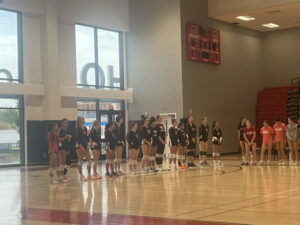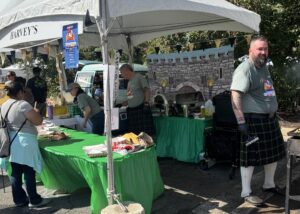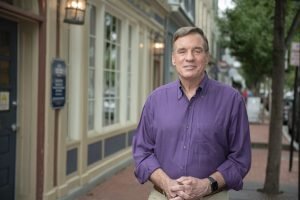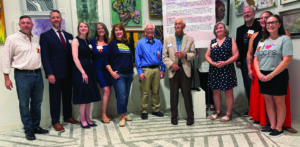After two-and-a-half hours of citizen input and deliberation, the Arlington County Board voted 5-0 Saturday afternoon to “accept” the East Falls Church Study Plan developed over the last three years by the East Falls Church Task Force.
By “accepting,” as opposed to adopting the plan, County Board Chair Jay Fisette said that while the study has been “handed off” from the task force to the county government, the deliberations on the specific makeup of many details of the plan will remain open for public and official county input over the next four to six months before being finally adopted.
“Citizens have asked us to slow down, and we are slowing down,” Fisette said, adding that he hoped citizens would “speed up” their study and involvement in the process and that a final “policy framework” can be adopted by the end of the year.
Board Member Chris Zimmerman stated the importance of adopting a plan in the face of potential alternatives for undesirable development that could come from other places if there are no “expectations” or “presumptions” in place.
Fisette also noted that, over and above the three years of work by the task force to produce the study, Arlington County has over 40 years of experience in land use planning around its Metro stations, and that as a result it has become a national model that others look to and study for its effectiveness in integrating Metro stations with surrounding areas.
Zimmerman also noted that moving forward, the report “accepted” today establishes that the East Falls Church area is unique, and unlike other Metro station neighborhoods, that there will be no attempt to superimpose a model from other Metro centers onto it, that the single family homes contiguous with it shall remain, that new planning is limited to the commercially-industrially zones portions, that there will be a major focus on design, the character of the streets and “enhancing the livability of the area for the people who live there.”
Board Member Barbara Favola expressed her desire that, going forward, a focus on “creating a sense of place” will be enhanced, and she made sure that language “to preserve and protect existing natural areas” in and around the site, and that “ensuring appropriate multi-modal movement on the streets” will also be built into a final plan.
Fisette thanked the task force for its “yeoman work” on preparing the study, and said that with the board’s acceptance of its report, its work is now done.
Saturday’s hearing was once again attended by a wide array of citizens speaking both in favor of and opposition to the plan. Opponents cited negative impacts on the surrounding neighborhoods and most often, the impact of the lack of parking on Metro ridership, including for persons with disabilities, and surrounding neighborhoods.
It was noted, however, that other Metro stations in Arlington, in the Rosslyn-Ballston corridor, also lack parking, and that commuters needing parking have the option of boarding the Metro at Orange Line stations to the west of the East Falls Church Metro, where there is ample parking.
The other major objection was to the inclusion in the plan of an area dedicated for more dense mixed-use development projects, allowing for some buildings to rise as high at nine stories. However, it was noted that the area permitting that development is carefully circumscribed in the plan to space directly adjacent I-66, and not infringing on any surrounding residential neighborhoods.
The fact that the plan strongly advocates the maintenance of existing single family home neighborhoods around the redevelopment area came as a surprise to many, who felt that the inherent potential economic value of those areas would compel their transformation, as well.
That component was cited as a value of the plan to all the stake-holders in the area, suggesting that with such a plan not only providing a vision, but a limit, to redevelopment of the area that the preservation of valued components of the area stands a far better chance.
The City of Falls Church has deployed an employee from its Planning Division to monitor Arlington’s progress on that plan, as it butts directly onto the border of the City on N. Washington St.













